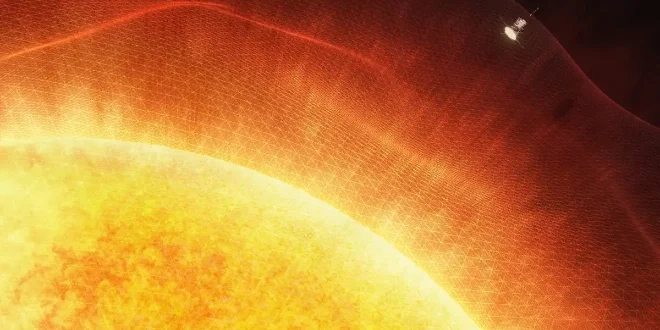NASA’s Parker Solar Probe is on track to make an unprecedented close approach to the sun, reaching speeds of 195 kilometers per second, or 435,000 miles per hour, on December 24, 2024. This will be the closest a human-made object has ever been to the sun, coming within 6.1 million kilometers (3.8 million miles) of its fiery surface.
Dr. Nour Raouafi, the project scientist for Parker, told BBC News that this venture is akin to “almost landing on a star.” He compared the significance of this mission to the historic moon landing in 1969, emphasizing its monumental importance for humanity. The probe, operated by the Johns Hopkins University Applied Physics Laboratory, will achieve its incredible velocity due to the sun’s immense gravitational pull, akin to the rapidity of a flight from New York to London in just 30 seconds.
Launched in 2018, the Parker Solar Probe is one of NASA’s most daring missions, designed to make repeated and closer observations of the sun. The challenges it will face are enormous, especially when it reaches its perihelion, the closest point to the sun in its orbit. At this juncture, the front of the spacecraft is expected to endure temperatures around 1,400 degrees Celsius.
The probe’s strategy involves quick forays into the solar environment, gathering data with its instruments protected by a robust heat shield. This mission is anticipated to provide breakthroughs in understanding several key solar processes.
Dr. Raouafi highlighted the mission’s significance, especially considering plans to return humans to the Moon and establish a permanent lunar presence. Meanwhile, Dr. Nicky Fox, the lead scientist on the Parker project, shared with BBC News that the mission’s findings are uncertain but will likely include observations of various solar wind waves. These observations could help resolve longstanding debates about the processes heating the sun’s atmosphere.


